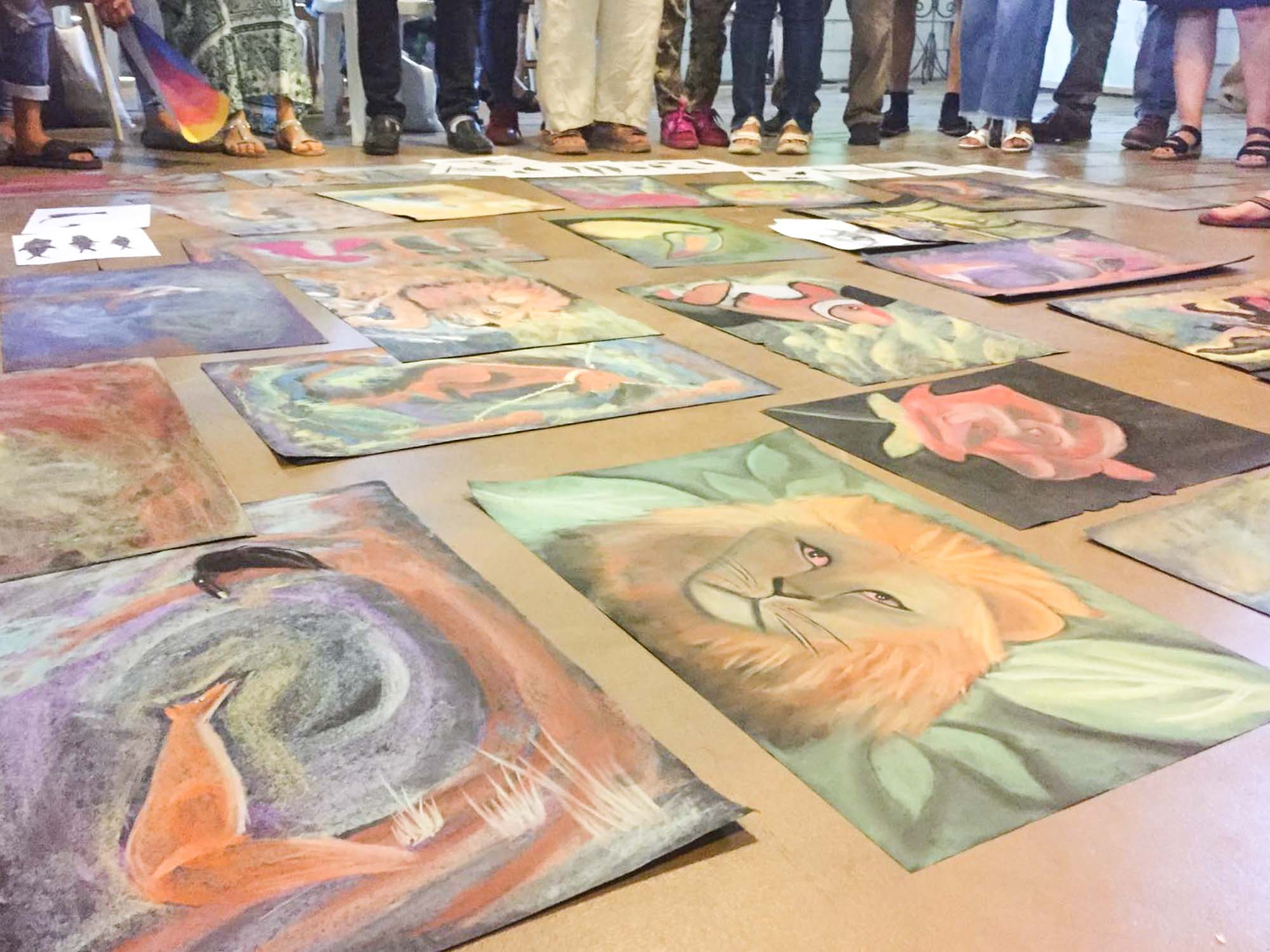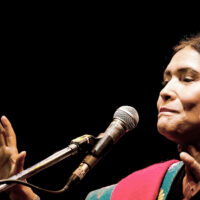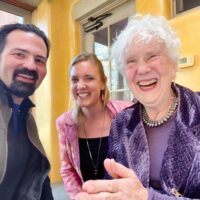Impressions from the Asian teacher training this year at the Acacia Waldorf School in the Philippines.
«The goal is not just a goal. The goal changes the soul.» These two lines shared by one of our mentors started Jel and my wonderful 5-day intensive, brain-wracking, and truly enriching Asian Teacher Training (ATT) journey.
The ATT is an annual training course that aims to prepare Waldorf teachers and help parents and other interested individuals learn about Steiner/Waldorf pedagogy principles and their practical applications. This training cycles through different countries. This year, it was hosted by the Acacia Waldorf School based in the Philippines. This 21st edition of the ATT had the theme, «The Detour as the Shortest Way Forward: The Healing Aspects of Waldorf Education.»
On a daily basis, we had close to four hours of plenary lectures and separate main lessons. Lessons were classified under Study of Man, Early Childhood, and Kindergarten, plus the different levels of Lower and Middle School. In the afternoon, we allotted almost the same amount of time for very engaging workshops: blackboard drawing, painting, games & movement, handwork crafts, bookbinding, and music.
I signed up for Study of Man and blackboard drawing, and Jel joined the Kindergarten lessons and handwork crafts. It was a week of surreal learning, unlearning, and relearning for us, to say the least.
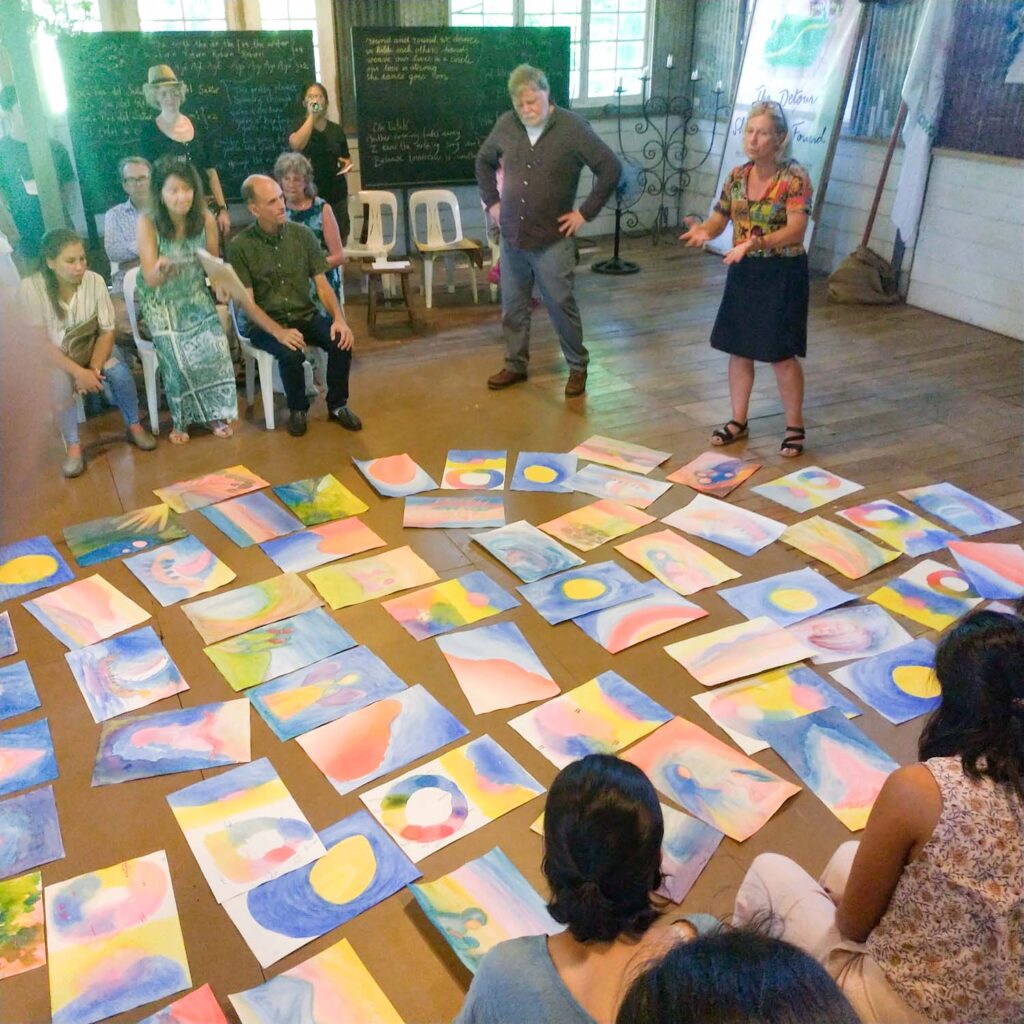
On the topic of sleeping and waking. When does sleeping become waking; and waking become sleeping? How can we help kids (and all of us adults included) sleep in such a way that they can bring their activities and experiences into the night, and bring them back the next day with better impressions, focus, and renewed insights?
Emotion is the trigger for every breath. First comes the breath, then the heart follows. Breathing connects with thinking, feeling, and willing. When I breathe in, how will it trigger my brain thoughts? When I breathe out, what exactly happens, and how does it help bring my thoughts out into the physical and spiritual world?
Regarding the catchy phrase, the «forgotten detour of forgetting» – how do we teach kids the equal value of remembering and forgetting? The more healthy impressions we get, the more vibrant and healthy they will be. But how do we really, effectively teach them to healthily forget, providing opportunities for them to re-awaken and re-‹member›?
On a practical level, when or how do we use mobile phones (and televisions) in front of our kids? At which age should they be introduced to these kinds of devices? Since their friends will eventually come from different schools using different instructional methods/pedagogies, how can we help them integrate and learn from each other’s differences and individual uniqueness? How do we cope with the inevitability of fast food and when, why, and where do we introduce competitive sports?
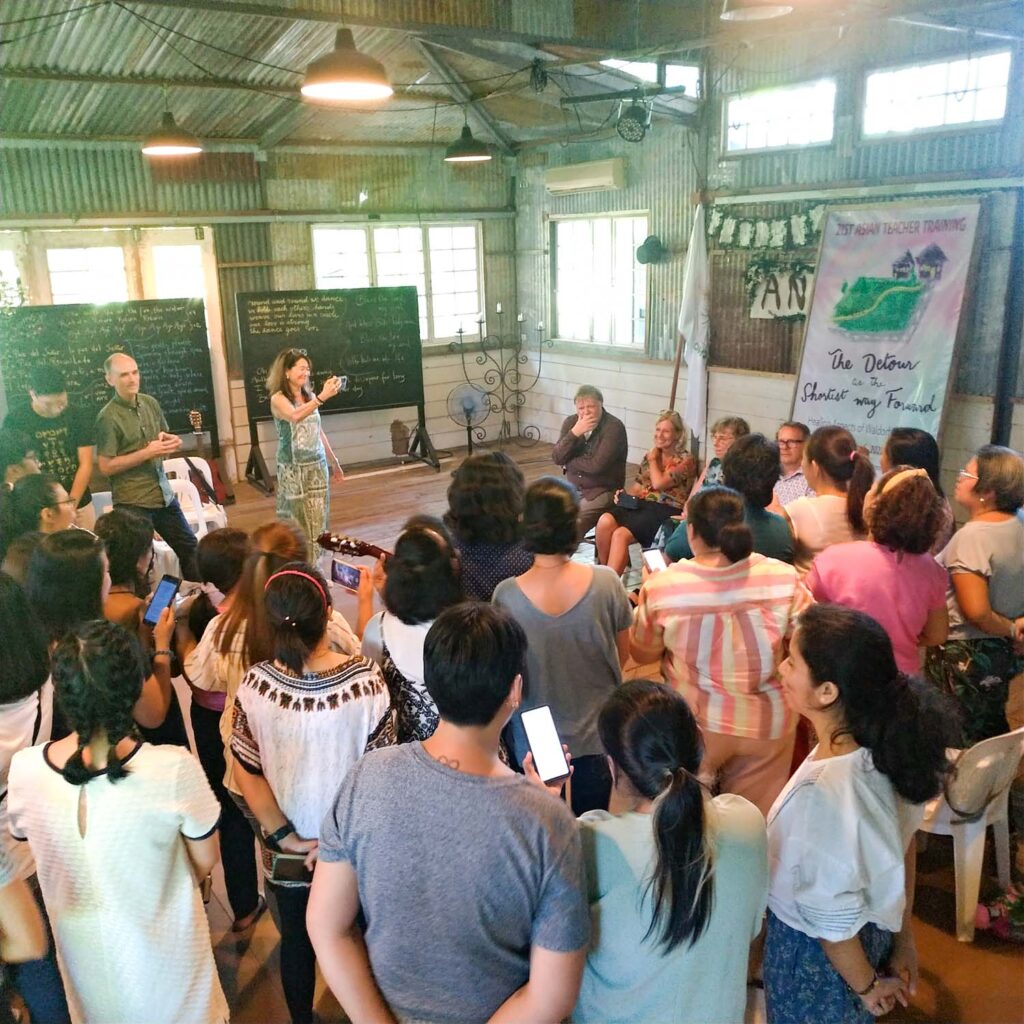
As much as we enjoyed our seriously fun art workshops, they got us thinking about how we can truly introduce these activities into our localities – communities that would usually identify these things as play and/or leisure time endeavors available only for the privileged few. How can we genuinely bring into consciousness and integrate these activities as mainstream pathways towards the development of abilities and skills?
Obviously, we left with more beautiful questions than answers. And five-day journey left us with more questions in the space we were exploring: how can we be active and relevant partners in our own communities here in Palawan, relating the various fields of education, farming, health, and enterprise development?
One thing though — we realized more and more that we became both students and teachers during this course. We looked at the questions and discussions equally as students and teachers – as students because we constantly need to be wide-eyed and ever-hungry to know more about our life, spirit, and will streams, and as teachers, because we also have other students to guide and must help inform a world that we ourselves do not know yet (i.e., our future kids, our staff, the farming communities that we seek to be involved with, etc).
We also realized that, as we ask why we want to be involved in fields and sectors seeking to help more people end different kinds of poverty, we realize that this movement goes both ways. It speaks to our constant yearning to be more and more human and to stretch ourselves to reach our highest and innermost self (our big I). And by stretching ourselves towards the periphery and towards our limits, there we get to feel the most — the most of ourselves. There, we also get to meet the most of the other — and the nearest possible that we can get to feel the other people around us. And when we ask the ‹why› genuinely, and as one of our mentors succinctly articulated it, we get to step into the most intimate will stream of the people around us. And in so doing, our lives weave with their lives. We breathe in and out together. And there, we get to create beautiful and harmonious opportunities to build better communities, and better societies. And maybe, just maybe along the way, bump into the gates of paradise.
With me just entering the third of my 21-year life cycles (if there is such a thing as 21-year cycles!) and Jel midway into her second 21-year cycle, we couldn’t help but be thankful and wonder what’s in store for the next chapter of our biographies.

